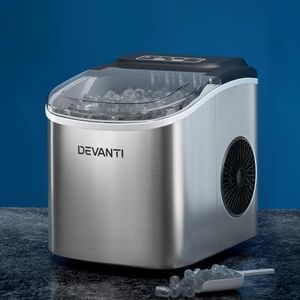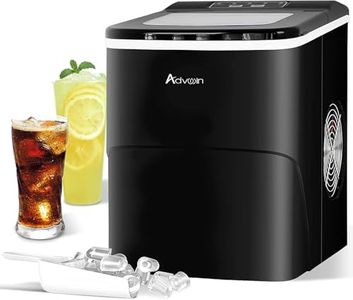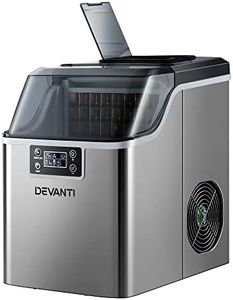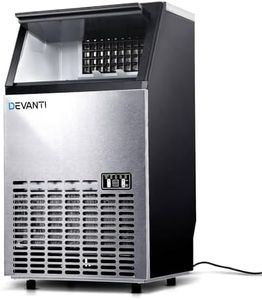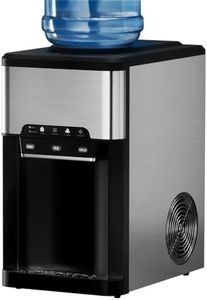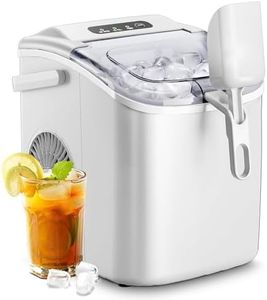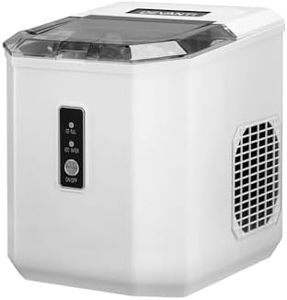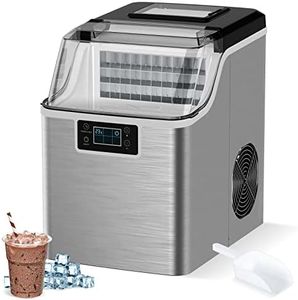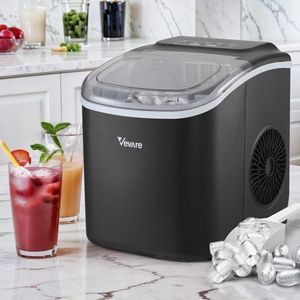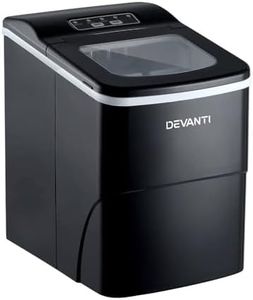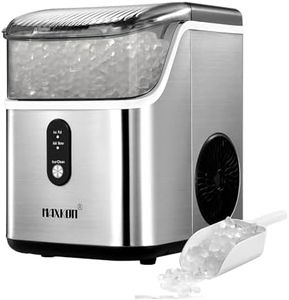We Use CookiesWe use cookies to enhance the security, performance,
functionality and for analytical and promotional activities. By continuing to browse this site you
are agreeing to our privacy policy
10 Best Portable Ice Makers
From leading brands and best sellers available on the web.Buying Guide for the Best Portable Ice Makers
Choosing the right portable ice maker is all about matching the machine’s features to your lifestyle and needs. Whether you want fresh ice for small gatherings, camping, or your daily beverages, understanding the main specifications will help you pick a machine that delivers enough ice, fits your space, and is convenient to use. Be clear about where and how often you'll need ice, and let that guide your decision on the most important features.Ice Production CapacityIce production capacity tells you how much ice the machine can produce within 24 hours. This is important because it determines whether the ice maker can keep up with your demands. Machines are usually divided into low capacity (about 20 pounds or less per day), moderate capacity (20-30 pounds), and high capacity (over 30 pounds). Lower capacity works well for solo use or occasional small gatherings, medium is suitable for families or frequent small parties, and higher capacity suits larger groups or regular high-volume needs. Think about how much ice you typically use to select the right capacity.
Ice Storage CapacityStorage capacity is the amount of ice the machine can hold at one time before it needs to be emptied. This matters because if you don’t use ice quickly, the stored ice may melt and the machine will recycle it, potentially slowing down the ice output. Small reservoirs (around 1-1.5 pounds) are fine for occasional, immediate use, while larger reservoirs (over 2 pounds) are better when you need to store more ice for longer periods or serve a group. Pick a size that matches how fast you use ice and how often you can empty the bin.
Ice Size and Shape OptionsSome ice makers allow you to choose between different sizes or shapes of ice, such as small or large cubes, nuggets, or bullets. This is important for personal preference and for fitting specific uses—smaller ice melts faster and is good for quickly chilling drinks, while larger cubes last longer and are good for slow sipping. If you care about the kind of ice you get, look for a model that offers multiple options. If you are not particular, a single option might suit you well.
Speed of Ice ProductionThe speed at which a portable ice maker can produce a batch of ice is usually given in minutes, often ranging from 6 to 15 minutes per batch. Faster machines are useful if you need ice in a hurry or for sudden gatherings. Slower speeds are usually fine for casual use or if you can plan ahead. Assess how quickly you want your drinks chilled or how spontaneous your needs are to pick a speed that matches your lifestyle.
Size and PortabilityPhysical size and weight determine whether the ice maker can easily fit on your countertop or be taken with you to events, camping, or tailgates. Smaller, lighter machines are easier to move and fit tight spaces but may have lower capacity. Larger units can make and store more ice, but are heavier and require more space. Consider where you intend to use the machine (kitchen, RV, outdoors) and whether you need to move it often.
Ease of CleaningSome ice makers include features like self-cleaning cycles or removable parts that make maintenance easier. This is important because a clean machine keeps your ice tasting fresh and prevents buildup that can cause issues. Machines that are easier to clean save you time and hassle, especially if you use the ice maker often. Check for models with cleaning reminders or simple-to-remove components if this is a priority for you.
Noise LevelThe amount of noise a machine makes when running can vary, and is measured in decibels (dB), but manufacturers often just describe their machines as 'quiet' or 'low-noise.' If you plan to use your ice maker in an area where quiet is important—like an office or during nighttime—look for quieter models. If noise isn’t an issue for you, this may be less important.

